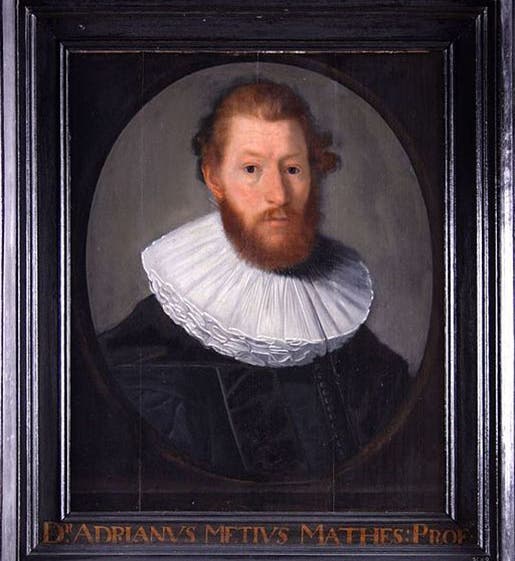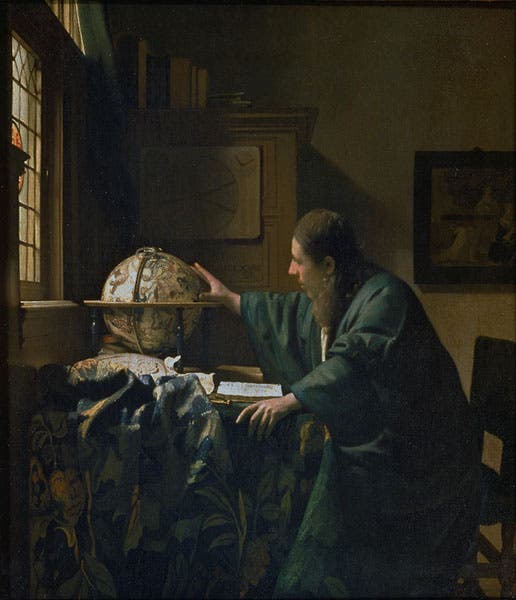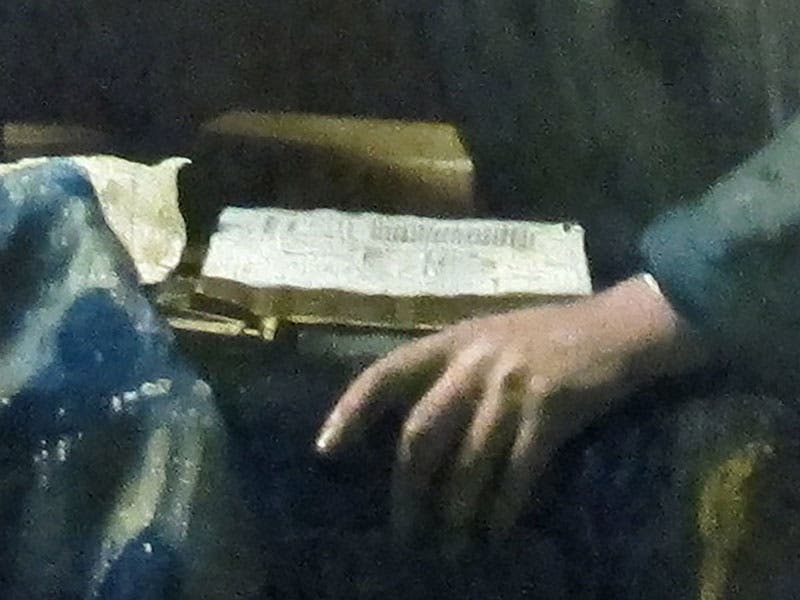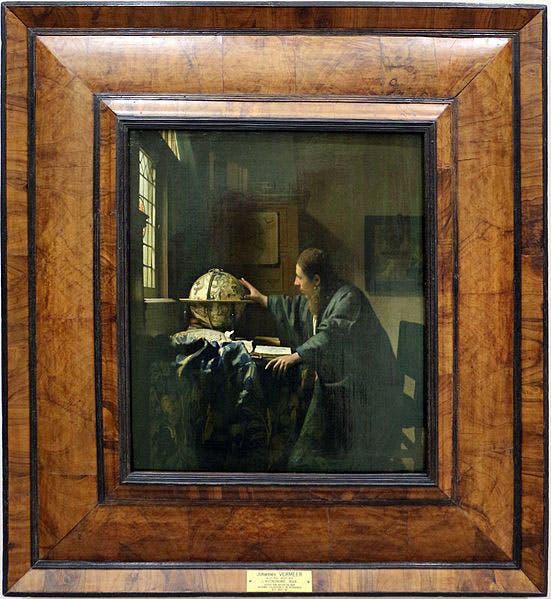Scientist of the Day - Adriaan Metius
Adriaan Adriaanszoon, now known as Adriaan Metius, a Dutch mathematician and astronomer, was born Dec. 9. 1571, in Alkmaar in the Netherlands. He was professor of mathematics at Franeker for 37 years. Metius wrote several astronomical compendia, two of which we have in our History of Science Collection: Institutionum astronomicarum (1608) and Primum mobile (1633). But he would probably be forgotten today were it not for one odd historical happenstance.
In 1668, the Dutch artist Jan Vermeer finished a painting that we generally call The Astronomer, showing a handsome and thoughtful natural philosopher, working at a desk on which there is a celestial globe and an open book (second image). The book, it turns out, is none other than the 1621 (2nd) edition of the Institutiones astronomicae et geopgraphicae by Metius. If you go to the Essential Vermeer webpage for this painting and mouse over the opened book, the panel to the right will offer you an enlarged and re-oriented view of the pages shown and tell you a little more about Metius. This is very convenient, for it is difficult to look at the book in the painting (third image) and see anything that would help identify it, and Vermeer certainly didn’t tell us what book he was painting. It took some dedicated sleuthing by a Vermeer scholar, James Welu, to identify the book from this oblique view of just a single opening. Perhaps things are a bit clearer when you study the original, which happens to hang in the Louvre (fourth image).
Vermeer’s astronomer, incidentally, is thought by some scholars to be a portrait of a young Antoni van Leeuwenhoek, who was about to embark on his famous studies with the microscope when this portrait was painted. Vermeer and van Leeuwenhoek were fellow citizens of Delft and exactly the same age, and van Leeuwenhoek was the executor of Vermeer's estate, so it certainly is possible. But documentary evidence is completely lacking. It was actually easier to identify the book than the persona of the portrayed astronomer.
If you have mathematical training, you might be familiar with the term Metius’s number, given to the ratio 355/113, a good approximation of pi. The ratio is named after Adriaan’s father, Adriaan Anthoniszoon, who was the first to calculate it, around 1585. Our Adriaan, however, was the first to publish it.
If you have art historical training, you might know that the cadaver being dissected in Rembrandt’s famous painting, The Anatomy Lesson of Dr. Tulp (1632), has been identified as Adriaan Adriaanszoon, an executed criminal. This was not our mathematician/astronomer of the day. Perhaps that is why he preferred to be called Metius.
Dr. William B. Ashworth, Jr., Consultant for the History of Science, Linda Hall Library and Associate Professor emeritus, Department of History, University of Missouri-Kansas City. Comments or corrections are welcome; please direct to ashworthw@umkc.edu.









